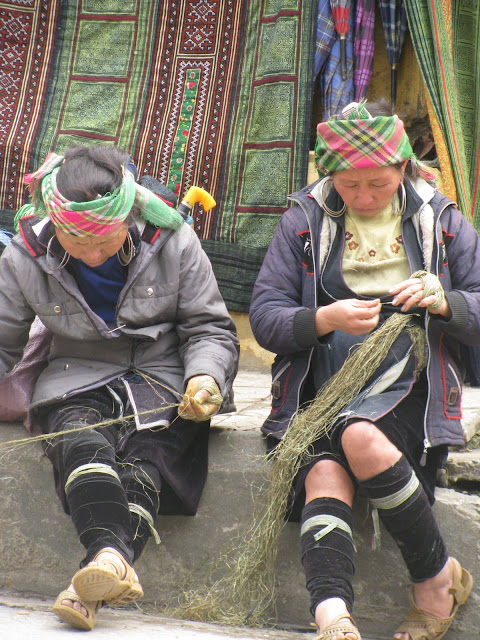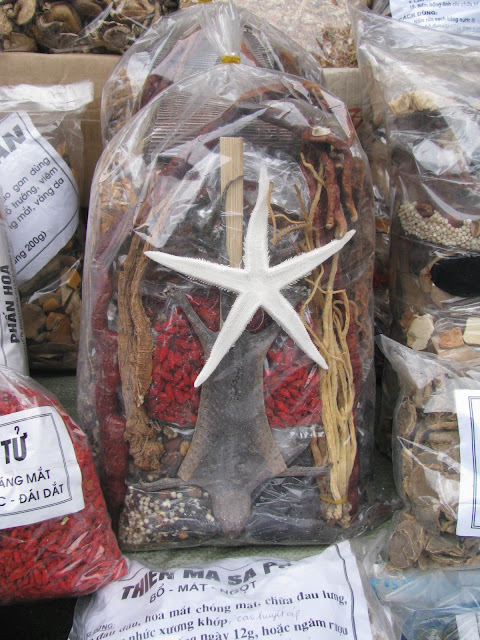We’re in China! We flew to the city of Kunming in Central Yunnan for a couple of nights and for the first time in eight months of travel no-one, and we mean no-one, speaks a word of English, putting our travel prowess to the test. We do, however, manage to order up the local brew (strangely easy in every culture).
There appears to be a desperate need for English translators in China...
Dali—in a stunning location sandwiched between mountains and Erhai Lake we wander around ancient alleys, hike the trails in the mountains above town, rent bicycles and catch a ferry to various points across the lake and pause at the Three Pagodas, the oldest standing structures in southwest China dating to 824 AD.
Capturing the pagodas reflection in the water at sunset.
We leave Dali for Lijiang—the only foreigners on a three-hour, twisty-turny ride in an ancient bus packed with people. Lijiang’s maze of cobbled streets, rickety old wooden buildings and gushing canals makes it one of the most visited sights in northern Yunnan. Above is the view from our room at the Zen Garden Hotel overlooking hundreds of tiled roofs.
Elderly local men gather in the square. We wonder if they’re pondering the young, trendy Chinese tourists passing by who freely spend their new-found wealth on tacky, tourist souvenirs.
The Naxi Orchestra is perhaps the town’s most legendary attraction. The 24 Naxi members play a type of Taoist temple music that has been lost elsewhere in China. The pieces they perform are supposedly faithful renditions of music from the Han, Song and Tang dynasties, and are played on original instruments. We couldn’t grouse about the somnolent musicians as they are almost as ancient as the music they played. The Naxi people are a minority tribe who number 290 thousand. More than half reside in the city of Lijiang. They are thought to be descendants of the ancient nomadic Qiang tribe driven south by northern invaders and have lived in Lijiang for 1400 years.
We leave Dali for Lijiang—the only foreigners on a three-hour, twisty-turny ride in an ancient bus packed with people. Lijiang’s maze of cobbled streets, rickety old wooden buildings and gushing canals makes it one of the most visited sights in northern Yunnan. Above is the view from our room at the Zen Garden Hotel overlooking hundreds of tiled roofs.
The focus of Lijiang is Old Market Square, once the haunt of Naxi traders. This fellow who was riding a horse, is a throwback but we're not sure about the baseball cap under his fur hat.
Elderly local men gather in the square. We wonder if they’re pondering the young, trendy Chinese tourists passing by who freely spend their new-found wealth on tacky, tourist souvenirs.
The Naxi Orchestra is perhaps the town’s most legendary attraction. The 24 Naxi members play a type of Taoist temple music that has been lost elsewhere in China. The pieces they perform are supposedly faithful renditions of music from the Han, Song and Tang dynasties, and are played on original instruments. We couldn’t grouse about the somnolent musicians as they are almost as ancient as the music they played. The Naxi people are a minority tribe who number 290 thousand. More than half reside in the city of Lijiang. They are thought to be descendants of the ancient nomadic Qiang tribe driven south by northern invaders and have lived in Lijiang for 1400 years.
There appears to be a desperate need for English translators in China...
On the northern edge of town is Black Dragon Pool Park where the view of Jade Dragon Snow Mountain is the most obligatory photo shoot in southwest China. The mountain in the background is the daunting Shanzifeng (Fan Peak) at an altitude of 18,400 feet. It is perennially snow capped and was climbed for the first time in 1963.
Sandi has done a lot of yakking in her life but never like this.
We had heard the Chinese love to eat dog so were surprised to see so many beautiful purebreds like this handsome Chinese Chow.
The beauty of Yunnan speaks for itself.
Yunnan’s original trek, Tiger Leaping Gorge is now considered a traveller’s rite of passage. One of the deepest gorges in the world, it measures 16km long and is a giddy 3900m from the waters of Junsha River to the snow capped mountaintops. Tim stands in front of Tiger Leaping Stone, a large rock in the middle of a raging river that gave the gorge its name. The legend goes that a tiger being chased by a hunter escaped capture by leaping over the river with the help of this rock.
Local village women in traditional costume off to market in the cobble streets.
Sandi at the Stone Bridge.
We day-trip outside Lijiang and stop at a Yao village. The Yao women are famous for their long hair which can be up to 1.5m long and is only cut twice in their life! Once when they are 18 and again when they get married. They put it in different styles which tells their marital status. Apparently they only wash their hair with rice water and they claim this keeps away the grey hairs.
We climb a long stairway to the top of the hills past beautiful rice terraces. The Long Ji terraces reach an elevation of 1916 m and cover 7.16 sq km. The local villagers have been using these terraces for rice (and tea at lower elevations) for hundreds of years.
Tim tucks into a traditional hill country meal of rice and lemongrass chicken baked in bamboo.
From Lijiang to Guilin, one of the most-visited cities in China, long famous for it’s limestone karst hills. The towers sprout from a patchwork of paddy fields and flowing streams, creating a dreamy, seductive landscape that left our souls stirred. We take a river cruise on the Li River from Guilin to Yangshou seeing nature’s handiwork at its most glorious and rent bicycles to view it from the riverbank.
We attend the waterborne spectacle of Impression, Sanjie Liu created by the acclaimed director Zhang Yumou who also produced the opening ceremonies for the Beijing Olympics. This innovative show is on a grand scale with over 200 bamboo rafts in the water at once. It is a strange but beautiful mix of floodlights, singing, and minority processions against a magical backdrop of karsts.
Bottom’s up! China’s public toilets make us yearn for the comforts of home—no walls, no doors, no seat, no toilet paper, no flusher and usually long lines with everyone watching!!! Needless to say we planned our ‘breaks’ very carefully.
In 1933 the word ‘Shangri La’ was introduced into the world’s vocabulary by novelist James Hilton who wrote in his book Lost Horizon about four westerners stranded by a plane crash in an idyllic mountain paradise in the Himalayas. He named it Shangri La hinting that the inspiration for his mythical paradise derived from Joseph Rock's National Geographic articles about northwest China in the 1920s and 30s. Since publication of the book many countries like Nepal, Bhutan and others laid claim to the title of Shangri La. China, however, has the best claim since Joseph Rock who wrote the articles made Lijiang his hometown from 1920-37. As a result, in 1927 the Yunnan government claimed with ‘certainty’ that Shangri La was in fact an area 60 miles north of Lijiang called Xhongdian County. The local government office officially changed the name in 2002 to Xianggeliila (Shangri La).
We’re flying to Hong Kong now—back to skyscrapers, fancy cars, designer brands and... ahhh bliss, Starbucks and western loos!
















































































